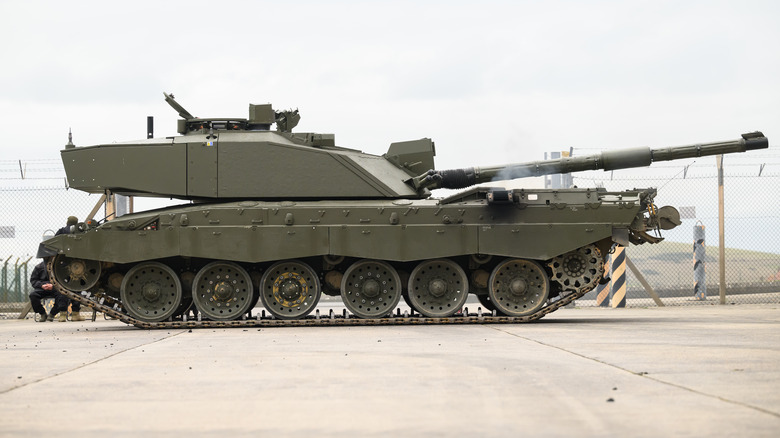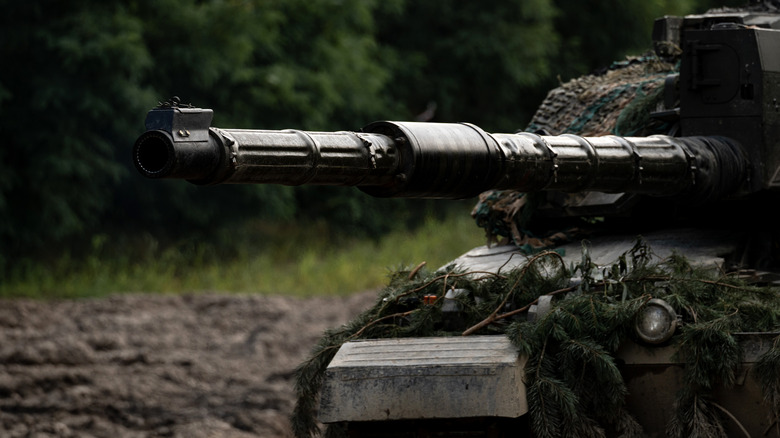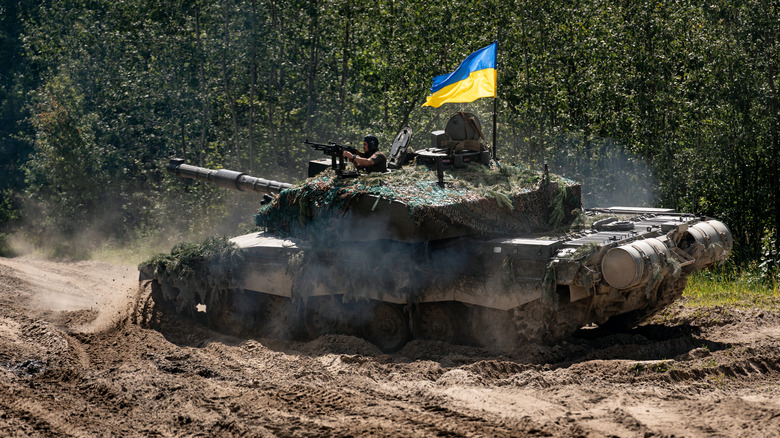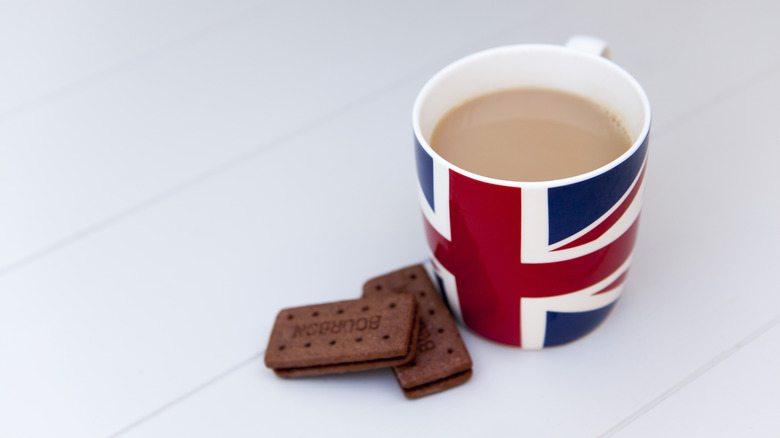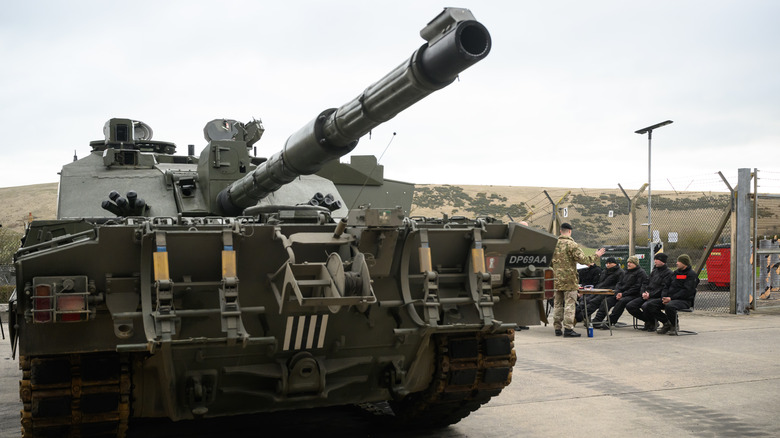Everything To Know About The British-Made 'Challenger' Main Battle Tanks
Despite being far from its imperial heights, Britain still has one of the world's foremost militaries with many analysts ranking it within the top five forces globally. It also has a lot of history when it comes to tanks, from the armored vehicles' early development, through two world wars, the Cold War, into the modern age.
The British invented the tank during World War I in an attempt to break the deadlock of trench warfare. Since then, armored vehicles have been a core part of the British Army. Britain's current main battle tank is the Challenger II, which saw service in several conflicts including the Second Gulf War. It's also being used in the current war in Ukraine as Britain sent several over as part of a military aid package.
The Challenger 2 was designed in the 1980s and served as a replacement for the Challenger 1. It was originally built by British company Vickers, which eventually merged into BAE, and the fact it created jobs for British workers was one of the Challenger 2's selling points over the likes of the Leopard 2 or M1 Abrams when the United Kingdom's Ministry of Defence was commissioning that generation of tanks. Its name has a lot of history too, with the first "Challenger" being the Cruiser Mk VIII Challenger of World War II. But what are its strengths and weaknesses? Is it fit for modern service? And can it brew a decent cup of tea? Let's find out.
The Challenger 2 has a unique gun and a lot of bulk
Weighing 64 tons, the Challenger 2 is one of the heaviest main battle tanks around, but it still has a lot of speed despite the bulk. Most of the weight is down to the tank's heavy armor plating. Flat out, Britain's main battle tank will do 37 mph. This is noticeably slower than the likes of the Leopard 2 and M1 Abrams, but still fairly fast considering the vehicle's weight. The tanks that are upgraded to Challenger 3s over the next few years will receive a new engine which should up the speed to some degree.
With its fuel tanks full, the Challenger 2 has an effective operational range of 340 miles — though that drops if the tank is operating off-road. The main gun is a 120mm L30A1 designed primarily as an anti-tank weapon. The L30A1's barrel is also rifled, though there is a lot of debate about how much of an advantage that provides in a tank. Given that the Challenger 3's main gun will be smoothbore, the rifling probably wasn't worth the effort. The gun also has sights on the barrel, which is pretty unique to the Challenger 2.
Despite its thick armor, the Challenger 2 does have one pretty significant weakness: it's one of the few modern tanks with external fuel tanks. The fuel tanks are attached to the rear of the vehicle, and theoretically vulnerable to attack. Maintenance may be another issue, with the Challenger requiring two tool kits as the hull is built with imperial measurements and fittings while the turret is built using the metric system.
Britain isn't the only country with Challenger 2 tanks
Although the Challenger 2 is designed and built by a British company and is inextricably linked to the British armed forces, the United Kingdom isn't the only country with a battalion of the tanks in their arsenal. Oman, which has close ties to the British armed forces, also uses the Challenger 2 as its main battle tank.
A more recent user of the Challenger 2 is Ukraine. Britain sent 14 of the armored vehicles over as part of a January 2023 aid package. Other countries have also supplied Ukraine with heavy armor, including Germany which has supplied several Leopard II tanks. One of the Challenger 2 tanks sent to Ukraine was taken out of action in September 2023 after apparently hitting a mine which subsequently caused a fire in the rear fuel tank. The crew appears to have evacuated safely. This is the only time a Challenger 2 tank has been lost in a conflict.
You can tell it's a British tank
While stereotyping isn't always the correct thing to do, sometimes it's simply unavoidable. If you were making a joke about an excessively British tank, then some in-built tea-making facilities would be high up on the list of features. Believe it or not, that's exactly what the Challenger 2 has. Each tank has a "Boiling Vessel" designed to heat water for consumption.
Said vessel has a lot of practical use, including heating the pre-cooked meals that come in ration packs. But its main use seems to be providing the hot water you need to make a nice cup of tea, which subsequently boosts the morale of the four-man tank crew. Theoretically, it could be used for instant coffee, but British ration packs tend to contain all of the tea bags, dried milk or creamer, and sugar you need to make a somewhat decent brew considering the circumstances.
It could be the last of the British Main Battle Tanks
Despite being designed over three decades ago and in service for more than 20, plans are in place to keep the Challenger 2 in service until the mid-2030s. There is a "Challenger III" but that's not actually its own tank; it's basically a Challenger 2 that has gone back to manufacturer BAE systems for a fairly hefty upgrade. The upgrades include a new digital turret, a more powerful engine, and a new smoothbore gun. There are going to be fewer "Challenger 3" tanks than there were Challenger 2s, with only 148 upgrades ordered. Deliveries of the upgraded tanks are expected to begin in 2027 with the final Challenger 3 arriving in 2030.
As far as total replacements go, that's a bit up in the air. No official replacement has been suggested let alone ordered. There's also a large question mark over the place of the tank in modern warfare. As the war in Ukraine has demonstrated, even older anti-tank weaponry like the Javelin can devastate a battalion of tanks. Drones and modern aircraft are also a major threat to large vehicles. Britain had previously stated an intention to abandon the tank altogether as countering cyber warfare was seen as a better use of budget and resources. However, that attitude may change given the direction that the global political climate has taken in the early 2020s.
